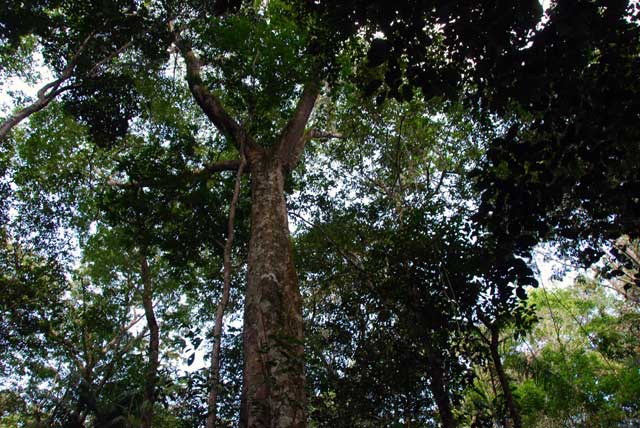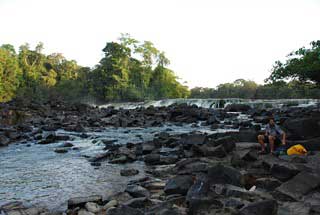Fly Fishing Jazz: The Music of the Jungle

Kirk Deeter just returned from deep in the Guyana rainforest, where his goal was to catch an arapaima on a fly.
As April is “Jazz Appreciation Month,” I thought I’d share an experience that has less to do with lessons related specifically to fishing, and more to do with appreciating one’s audible surroundings while on a fishing adventure.
Several nights ago, I found myself swinging in a hammock in the Guyanese jungle as darkness fell. It was my first night in the bush, as part of an expedition targeting arapaima on the fly (more on all that in a few weeks). I don’t know how often you’ve slept in a sling under a tarp in a dense South American rainforest, but I can tell you that it isn’t exactly a comfortable spot for nodding off, at least not at first.
Naturally, you worry the spiders and other bugs that might wriggle their way through the mosquito netting. Then you feel an uncanny resemblance to a giant prosciutto ham wrapped in cheesecloth (the ideal jaguar bait) hanging from the trees. Lastly, you worry about having to pee in the middle of the night, and meeting a bushmaster (snake), on your way to the relief station.
I dropped my water bottle, decided to (literally) sweat it out, and closed my eyes, hoping that sheer fatigue would knock me out until the respite of daylight.
 Yet much to my surprise, as I lay there, eyelids pressed tight, perspiration rolling down my forehead, I heard jazz music. Not the instrumental variety, mind you. There were no earphones, and no iPod involved. But I heard the music of the jungle. That noise—in the moments when the sun fades, and the night envelops the canopy—can only be described as music. And having listened to and played many types of music myself, I can only describe it as pure jazz. There’s a steady rhythm, but the melody is in free-flow—never contrived—yet, somehow, quite soulful.
Yet much to my surprise, as I lay there, eyelids pressed tight, perspiration rolling down my forehead, I heard jazz music. Not the instrumental variety, mind you. There were no earphones, and no iPod involved. But I heard the music of the jungle. That noise—in the moments when the sun fades, and the night envelops the canopy—can only be described as music. And having listened to and played many types of music myself, I can only describe it as pure jazz. There’s a steady rhythm, but the melody is in free-flow—never contrived—yet, somehow, quite soulful.
It starts with the bugs. Like the crickets chirping on a warm night in the States, there’s a steady, rhythmic hum. But in the jungle, that hum is richer in tone than anything I had heard before. It’s as if those insects are brushes rubbing the surface of a snare drum—an occasional snap or bass thump for effect tossed in for good measure.
The birds. They bleat and squeak, and echo through the trees, with sharp, yet eloquent notes, sometimes even with vibrato. The macaws, and the screaming piha birds, are trumpets. The smaller songbirds play in staccato, like notes from a piano.
The howler monkeys have a way of projecting loud, ripping gurgles, then folding those notes into subdued, muted tones. I thought of a stand-up bass, and also deep horns, like trombones, flinging and feathering notes through “wah-wah” mutes.
And then there are the frogs. As a sax player, the frogs soon became my favorites. Burping and chipping notes, as if they were blowing through reeds—sometimes shrill, though usually smooth. And always in time. The “frog line” has altos, and tenors, even basses and sopranos.
It was uncanny. I was mesmerized by this music. It had so many layers, all connected in a syncopated, natural, beautifully melodic way.
Within an hour, I fell into deep, peaceful slumber.
Now that I have returned home, when I fall asleep at night, I still hear the faint, melodies of the jungle in my head, though less and less with every passing evening.
And I find myself missing that tune more and more.











